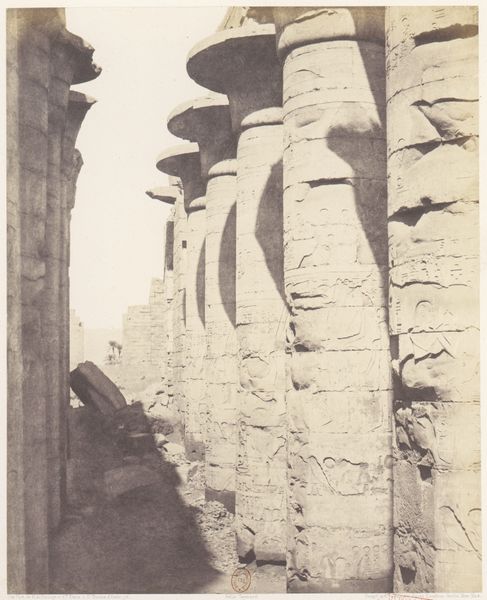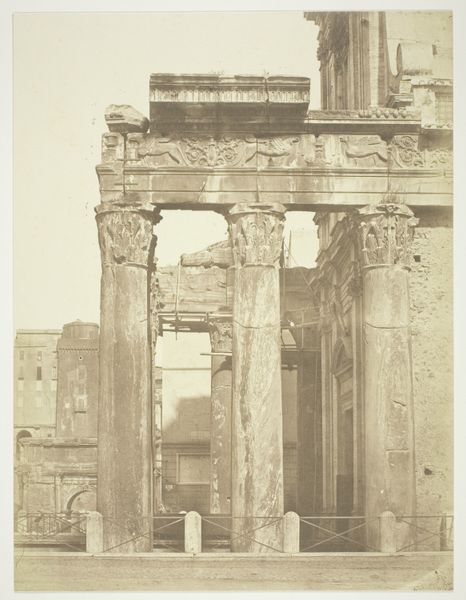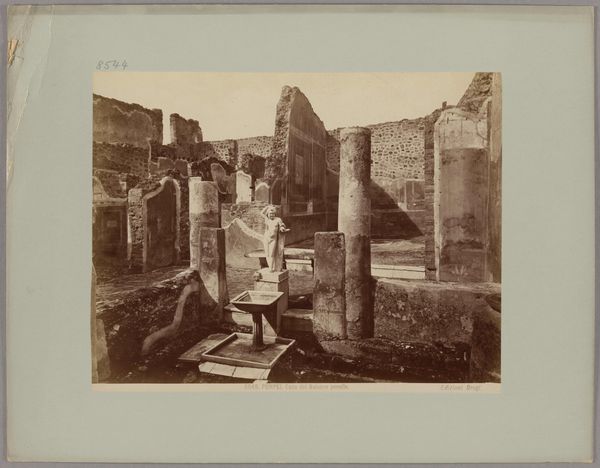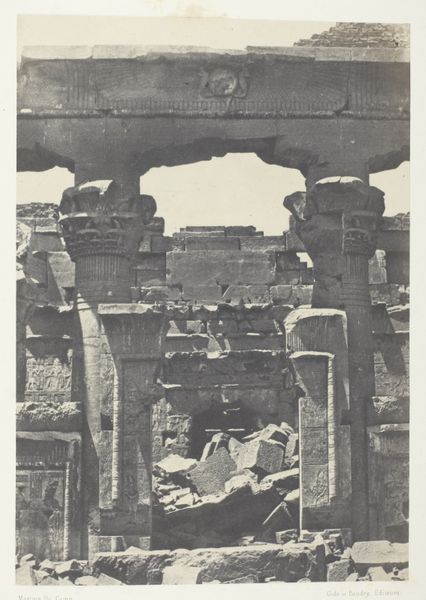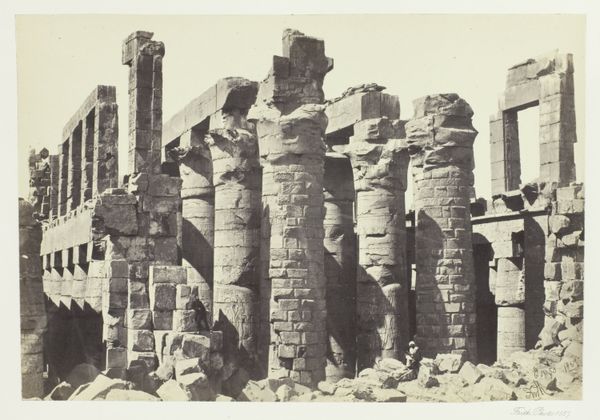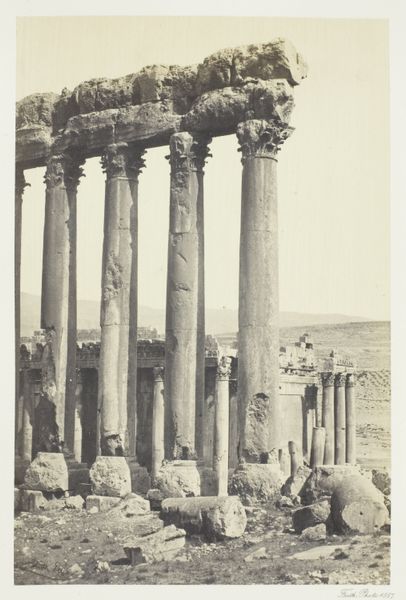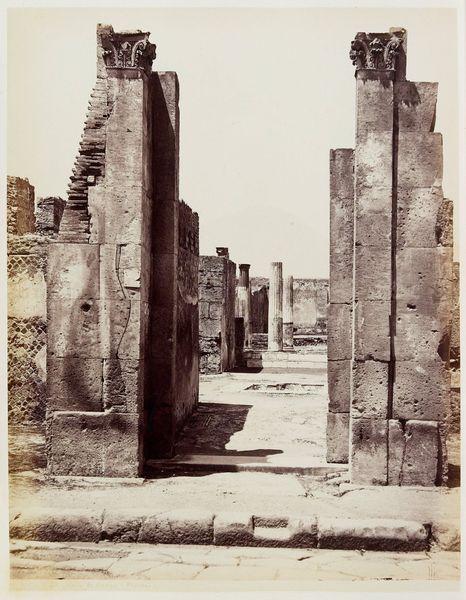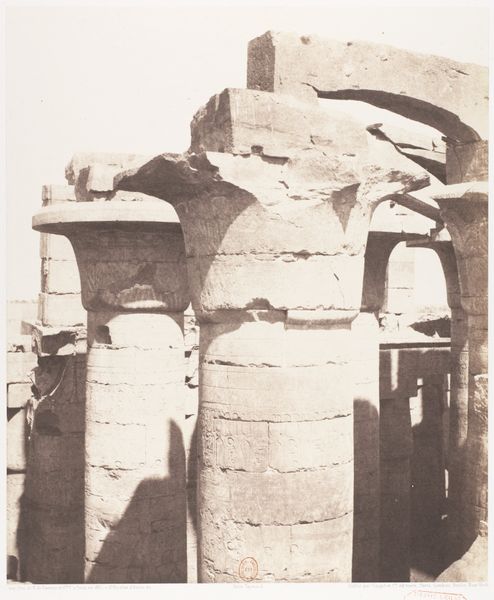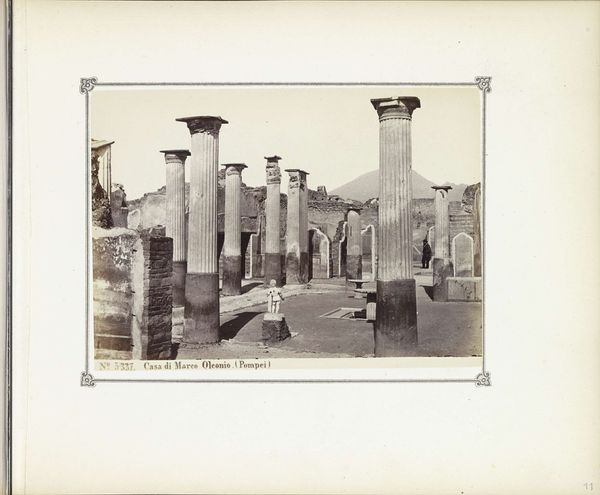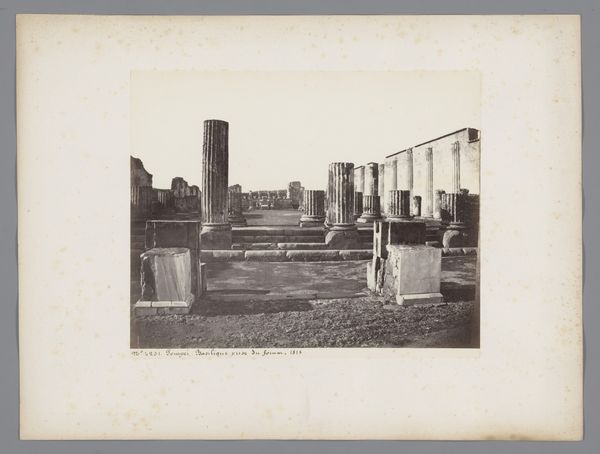
print, photography, architecture
#
16_19th-century
# print
#
landscape
#
ancient-egyptian-art
#
photography
#
egypt
#
england
#
ancient-mediterranean
#
architecture
Dimensions: 23.7 × 14.5 cm (image/paper); 42.6 × 29.4 cm (album page)
Copyright: Public Domain
Curator: This photographic print by Francis Frith, taken in 1857, captures a scene at Karnac, showcasing the monumental obelisk and a granite lotus column. Editor: An initial impression? It's a stark portrayal, bleached almost white by the sun. The contrast emphasizes the geometry and the enduring quality of these structures amidst the ruins. There is something austere, almost melancholy in the scale and quiet light. Curator: Frith was instrumental in popularizing images of Egypt in Victorian England. His documentation fed into an orientalist fascination with the 'mysteries' and 'grandeur' of antiquity. These weren't objective records; they shaped perception. Editor: Undoubtedly. From a purely structural perspective, observe the power of the composition. The vertical thrust of the obelisk acts as a strong visual anchor, drawing the eye upward, which contrasts the horizontal scattered pattern of the collapsed columns and stones. The materiality, especially the coarse texture of the remaining stone and finer texture on the obelisk, suggest the contrast of impermanence and the eternal. Curator: Consider, too, the accessibility Frith provided. Before mass tourism, photography served as a vital tool. This allowed those in England a taste of Egyptian magnificence. The flattened perspective diminishes the depth of the structures, but the architectural precision highlights how the image becomes a vessel that facilitates understanding and promotes visual tourism. Editor: Yes, indeed. The choice of framing is crucial too. By including the broken architecture, he juxtaposes the idealized image of a glorious past with the crumbling reality of the present, adding an implicit narrative of decay and time. Curator: Absolutely, one shouldn’t divorce his compositions from the colonial context that made such images palatable, furthering Western understanding. Editor: These lasting observations truly add further context. Curator: This intersection of structure, history, and cultural influence helps inform understanding.
Comments
No comments
Be the first to comment and join the conversation on the ultimate creative platform.
